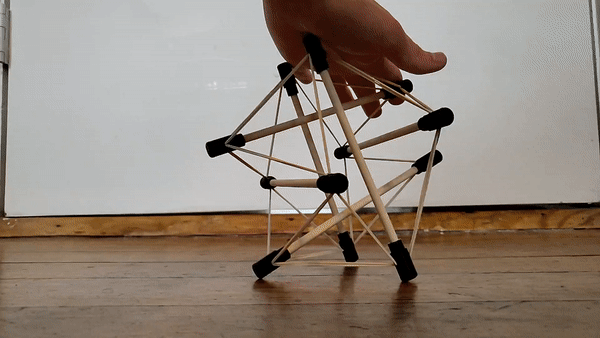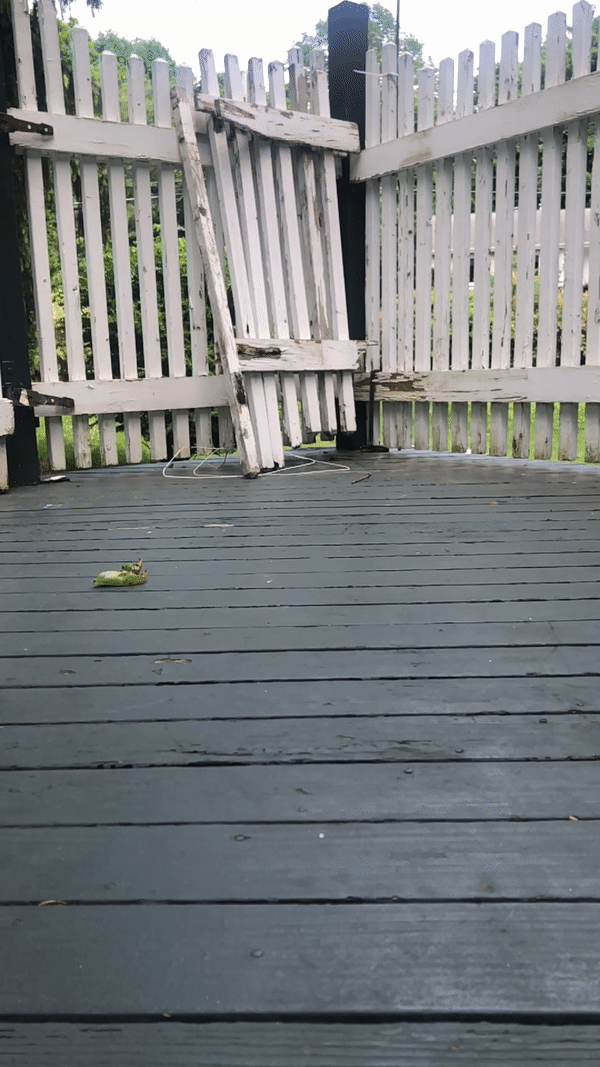Lunar Hopper with NASA JPL
*Project in Progress*
In Summer 2019, I began my senior capstone project in collaboration with NASA JPL to design a way to explore lesser known areas of our moons surface. NASA believes that Shackleton Crater, the moon's south pole, likely is home to large ice caps and wants to be able to explore this region, but has not been able to due to the rough terrain, steep slopes and unknown geography. Our project aimed to use tensegrity structures to develop a solution for NASA to explore these regions.

Project Goal:
To utilize tensegrity structures to create a new way to travel and explore hard to reach areas of the lunar surface.
Background & Research
During Summer 2019, my team of five began research on tensegrity structures and the moon. After talking with our NASA JPL contacts, we learned that they would like to develop a solution to explore the South pole of the moon. Through research we found that the Shackleton crater is the South pole of the moon and it is believed that this could be filled with frozen water sources, but that this area has not yet been explored because it has a significantly rocky and steep terrain that prohibits lunar rover vehicles (LRVs) from safely exploring the area. NASA wants to be able to safely land an exploration device in this area and be able to control its movement to further explore the area.

Shackleton Crater with Projected Ice Caps

Six-Bar Tensegrity Ball
Through research, our team found that tensegrity structures would be an interesting solution to this problem. Tensegrity structures are structures that consist of multiple compression members connected through tension members. What is unique about these structures is that the compression members are loaded solely in compression while the tension members are loaded purely in tension. This allows for an overall lightweight, but strong structure that can absorb energy from impact without harm to the structure. This means that a tensegrity structure could survive the impact on the surface from launch and had the potential to use that energy absorbed from the impact to further move the structure in a bouncing motion. Additionally, a payload could easily be attached to the center and protected by the structure surrounding it.
Constraints
NASA provided us with some preliminary goals for our final product which are outlined below:
-
Should carry a payload of roughly 30 kg to account for sensors
-
Should be able to withstand the environment of the moon
-
Should survive a 100 m drop impact
-
Should be able to travel 60 m vertically
-
Weight should be around 45 kg
Building on a Small Scale
To familiarize myself with tensegrity structures, the team ordered some wooden dowels and rubber bands so that each of us could create a small scale six-bar tensegrity ball. I played around with the number of rubber bands wrapped around each member to adjust the stiffness of the tension members. I also conducted some basic tests involving dropping the balls and compressing & releasing them to be able to visualize the ball's reaction and performance and better understand how the structures function. As expected, the balls with more rubber bands and therefore a higher stiffness had better bouncing and hopping reactions. The video on the right demonstrates a tensegrity ball being dropped and utilizing the energy absorbed from the impact to bounce back up. The video below shows a tensegrity structure being compressed and released utilizing an applied force to hop off of the ground from a stationary position.

Tensegrity Ball with End Caps Compressed and Released to Hop

Dropped Tensegrity Ball Bouncing
Presentation on Initial Research of Tensegrity and Lunar Surface
Design & Solution
Currently my team is utilizing our research from the Summer to design our solution for NASA JPL. There are various different shapes and designs for tensegrity structures that utilize different numbers of compression mechanisms. Shown above was the six-bar tensegrity structures which is the smallest number of compression members to form a ball shape. While this design was good for experimenting with tensegrity, we have decided to design a twelve-bar structure for this project as more bars will create a more round shape which will travel better and provide more protection for impact. At the moment we are analyzing the benefits and drawbacks of the cube, octahedron, double-six, and rhombicuboctahedron structures shown below.

Different Twelve-Bar Tensegrity Structures
The next step is to build these designs on a smaller scale and test to see which produces the best results for bouncing and hopping. From there we will then scale up and analyze different materials for the compression and tension members to maximize the energy that we can store from impact to use in the bouncing and hopping motions. As mentioned above, this project is still in progress, so this page will be updated as the project progresses.
